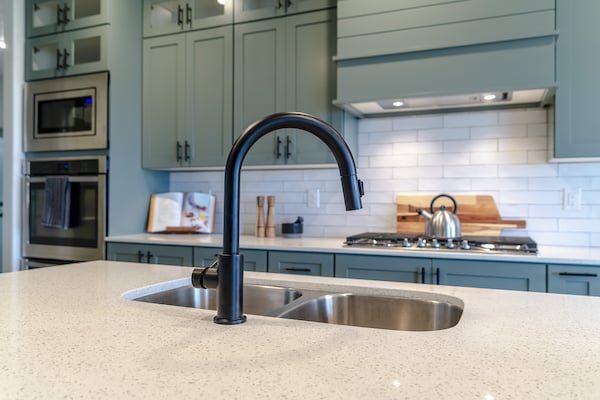Repair or Replace? Deciding on Building Drains
Building drain problems can cause stress and inconvenience if not addressed promptly. Whether it’s slow drainage, unpleasant odours, or visible leaks, these issues can disrupt daily life and cause damage to your home. Recognizing the warning signs early can help you decide whether your drains need repairs or full replacement.
Deciding between repair and replacement isn’t always straightforward. Several factors, including the age of the pipes, the severity of the issue, and future maintenance needs, play a role in this decision. By examining these elements, you can determine the most effective strategy to ensure the longevity and efficiency of your drainage system.
Advancements in plumbing technology provide more durable and efficient solutions, making replacements a valuable investment in many cases. However, sometimes repairs are adequate and cost-effective. Choosing the right approach depends on balancing immediate needs with long-term benefits, ensuring a safe and healthy environment for your home.
Recognizing Signs of Drain Issues
Spotting the signs of drain problems early can save you from major plumbing headaches later. When building drains start acting up, they usually give off warning signals. Look out for slow drainage in sinks, tubs, or toilets. A blockage might be forming and interfering with water flow. Foul odours wafting through your home suggest that wastewater isn’t moving properly, likely due to a clog or sewer gas leak.
Gurgling noises coming from drains aren’t just annoying—they often mean that air and water aren’t flowing freely, hinting at potential obstructions. Water stains or damp spots on walls or floors can point to hidden leaks within your drain system. If ignored, these seemingly minor issues can lead to larger problems.
Neglecting drain issues can result in water backing up into your home, which can cause damage to floors, walls, and furnishings. Mould and mildew growth from constant moisture exposure poses health risks to your family. Structural damage to the building can occur over time, as persistent leaks weaken both wood and drywall. Regular observation and maintenance can keep these issues at bay, ensuring the safety and comfort of your home.
Evaluating Repair vs. Replacement
Deciding between repairing or replacing drains can be tricky, but some guidelines help make the choice clearer. Determine the extent of damage first. Minor clogs and small leaks often only need a repair. But if the pipes are cracked, corroded, or repeatedly causing trouble, replacement might be more effective.
The age and material of your drains can also influence this decision. Older systems, especially those using outdated materials, could benefit from a full replacement with modern, more durable pipes. Longevity matters too. Consider how long repairs are expected to last versus the extended lifespan of entirely new drains.
Cost plays a significant role in this decision. While repairs might seem cheaper initially, frequent fixes can add up and become more expensive than a straightforward replacement. Newer piping materials, though costlier upfront, often require less maintenance and fewer repairs over time. This investment can lead to better performance and fewer plumbing emergencies down the line.
By evaluating your specific situation against these criteria, you can make an informed decision that ensures long-term functionality and peace of mind. Regular inspections and honest assessments of your drain’s condition will guide you in choosing the best course of action.
Repair Solutions for Building Drains
When it comes to fixing drains, several repair techniques can effectively address different problems. Clearing clogs is often the first step. Plumbers can use tools like drain snakes or hydro jetting to remove blockages and restore flow. These methods can quickly handle issues like hair, grease, or debris buildup in the pipes.
Another common repair solution is patching leaks. For minor leaks, plumbers might use sealants or clamps to stop water from escaping. If the problem lies in a joint or seam, re-caulking or soldering can reinforce these connections.
Sometimes the problem area involves damaged pipe sections. Rather than replace the entire pipe, plumbers can use pipe lining techniques. This involves inserting a resin-coated tube into the existing pipe, which hardens to form a new, durable lining.
Repairs work best when the issues are isolated and manageable. Choosing repair over replacement is often preferable if the rest of the drainage system is in good condition. It offers a quicker, less disruptive, and cost-effective solution for minor issues without compromising overall system integrity.
Benefits of Replacing Building Drains
Replacing building drains brings several advantages, thanks to advancements in materials and technology. Modern piping materials like PVC or PEX are more durable and resistant to corrosion, unlike older metal pipes which can degrade over time. These new pipes can handle high water pressure and resist chemical build-up, reducing the risk of future issues.
By replacing old pipes with new, the overall efficiency of your plumbing system improves. New pipes often lead to better water pressure and faster drainage, making daily tasks easier and more convenient. Moreover, replacement ensures that your plumbing system complies with current building codes, which can be crucial if you’re planning any renovations or selling your property.
Furthermore, having a modern, efficient drainage system can boost your property’s value. Prospective buyers often look for homes with updated systems, knowing it reduces the likelihood of expensive repairs in the future. Safety is another important benefit, as new installations minimize the chance of leaks, water damage, and mould growth, contributing to a healthier living environment.
In considering these factors, replacing old drains provides not just immediate functional benefits but also long-term value, making it a sound investment for your home.
Conclusion:
Maintaining effective drainage in your home or building requires a proactive approach to addressing issues and making informed decisions about repairs or replacements. Recognizing signs of trouble early can prevent small problems from turning into costly disasters. With a clear understanding of when to repair and when to replace, you can ensure the integrity and performance of your plumbing system.
When making decisions about your drainage system, consider the long-term benefits of modern materials and technology. While repairs offer immediate solutions, total replacement can provide lasting improvements in efficiency and safety.
If you’re ready to take action and ensure your drains are in their best shape, contact The Irish Plumber today. Our expert team is always ready to guide you through building drain repair and replacement, whether it’s simple repairs or a full replacement. Let us help you make the best choice for your home’s plumbing needs.






